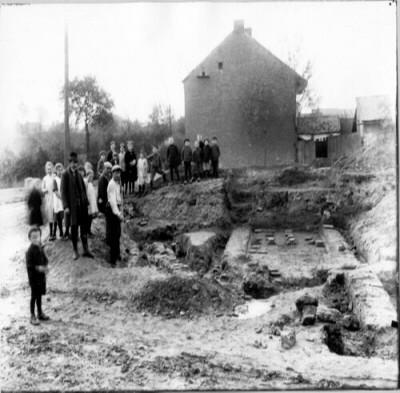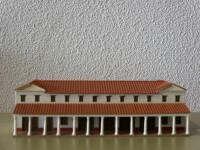Archaeological finds
Kerkrade has a long history of habitation. The oldest finds attesting to the presence of humans date back to 60,000 BC.
They are fist axes left by Neanderthals near the Domaniale mine. Many sites are known from the Roman period in Kerkrade. The sloping landscape with its fertile loess soil and stream valleys was an attractive settlement area for the Romans. The oldest traces of Roman occupation date from around the era and the last around 400 AD. The Romans entered our country around 12 BC and conquered all of the Netherlands south of the Rhine River. In fertile southern Limburg, they establish villas: large-scale farms with a Roman appearance.
Part of a rural settlement was excavated in 1997 in the Maar-West industrial area. In the process, the floor plans of several wooden buildings, wells and a sacrificial pit were discovered. This sacrificial pit is special because a terracotta figurine of a bear was found. This is a sacrificial figurine for the Roman goddess Artio and is unique for the Netherlands. Replicas of this bear are for sale at the central desk of the City Office.

